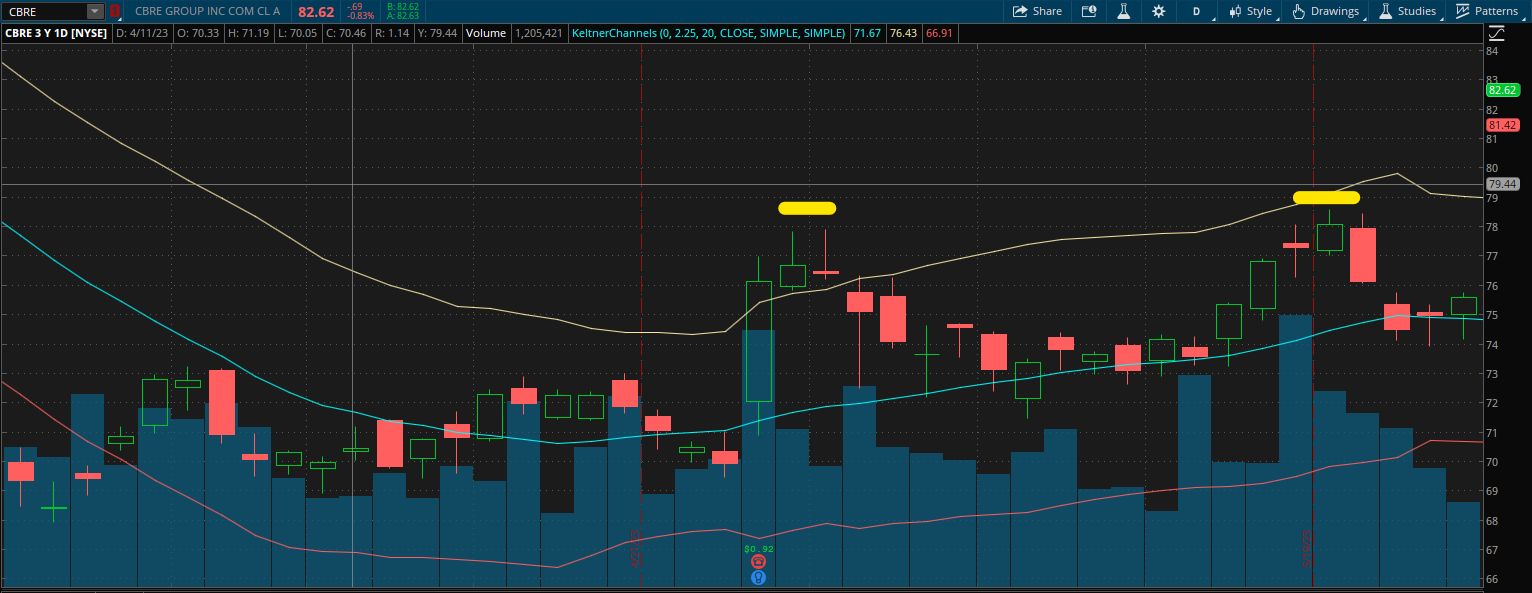What Is a Resistance Level in Stocks?
Stock Market Guides is not a financial advisor. Our content is strictly educational and should not be considered financial advice.
When it comes to active trading in the stock market, one of the most common terms you'll hear is "resistance level".
Someone might be talking about selling or shorting a stock at resistance. Or they might be talking about how a particular price point looks like it could be a resistance level.
If you want to know what a resistance level is and see how it looks on a stock chart, then you're in the right place. We'll cover that right here.
What Exactly is a Resistance Level?
A resistance level in stocks refers to a specific price level on a stock chart where the stock's price tends to find selling interest and prevents the price from going up further. It is also known as a "swing high."
In other words, it's a point where the stock's price has stopped increasing and starts to bounce back down. They visible as a chart pattern on a stock chart.
Stock Market Guides

Stock Market Guides identifies swing trading opportunities that have a historical track record of profitability in backtests.
Average Annualized Return
79.4%
Example of a Resistance Level
The image below shows an example of resistance level on a stock chart.
That chart shows the price activity for CBRE stock.
There are two yellow marks in that image. The first one is placed over the price bar where the resistance level is first established.
The second one indicates how the price responded when it came back up to that resistance level. You can see that in this particular case, the price appeared to rebound back downward when it approached the resistance level.
How Do You Find a Resistance Level on a Stock Chart?
To find resistance levels on a stock chart, you can follow these steps:
Look for Price Peaks or High Points
A resistance level is identified by finding areas on the stock chart where the price forms peak or top points. These are points where the price activity has stopped increasing and starts to turn downward.
Observe Lower Highs
To confirm that any given point is a resistance level, check the two price bars on either side of the high point. If these price bars have lower highs, it indicates the presence of a resistance level. In other words, the high of the peak should be higher than the highs of the adjacent price bars.
Identify Distinct Highs
While there might be several potential resistance levels on a stock chart, you can look for the highest price point among a group of nearby candles. The resistance level should stand out as having the highest price relative to its neighboring price bars.
Pay Attention to Peak-shaped Patterns
Some resistance levels may form clear Peak-shaped patterns, like an upside down V, where the price rises to a high point and then sharply declines again. These pronounced peak-shaped patterns are often easier to recognize as resistance levels.
Video About Resistance Levels
This video we made about stock market resistance levels might help improve your understanding:
How Do You Identify the Importance of a Resistance Level?
The magnitude of a resistance level can be determined by its distinctiveness and prominence on the stock chart.
The more pronounced the peak, the more important the resistance level is commonly thought to be.
If the resistance level is made up of a single short wick, it may not carry much weight. If, on the other hand, it's made up of a tall peak-shaped price pattern, that might be considered an important resistance level.
Some investors believe that the more important the price level, the better the odds of making a profit from trading against it.
Measuring the magnitude of a resistance level is subjective to a large extent, and different investors may have varying interpretations based on their perspectives.
Why Do Resistance Levels Matter?
Resistance levels can be important because they indicate areas where there might be sellers ready to short or sell the stock.
Whenever the price reaches a resistance level, there might be enough selling demand at that price level to push the price back down.
Traders and investors often pay attention to resistance levels because they believe that if the price revisits a previous resistance level, there's a chance that sellers will be present again at that level, potentially leading to another bounce downward in the stock's price. Resistance levels are popular among active traders, such as swing traders and day traders.
How Can Traders Profit from Resistance Levels?
By recognizing resistance levels on a stock chart, traders can make informed decisions about when to enter trades or investments with the hope that the stock's price will decrease after bouncing off the resistance level.
Traders use a resistance level to generate profits by entering short positions (shorting stocks or buying put options) near or just below the resistance level.
The idea is that if the stock's price revisits the resistance level, there is a chance that sellers at the old resistance level might be present again, leading to a potential price rebound.
Traders can manage risk by placing stop loss orders above the resistance level to close out the trade if the resistance level fails.
It's important to note resistance level trades are certainly not guaranteed to be successful, and the effectiveness of resistance levels can vary depending on the specific trade setup and market conditions.
Learning More About Resistance Levels
You can contact us any time if you would like to ask any questions about resistance levels or about anything else related to the stock market.
Join Our Free Email List
Get emails from us about ways to potentially make money in the stock market.
